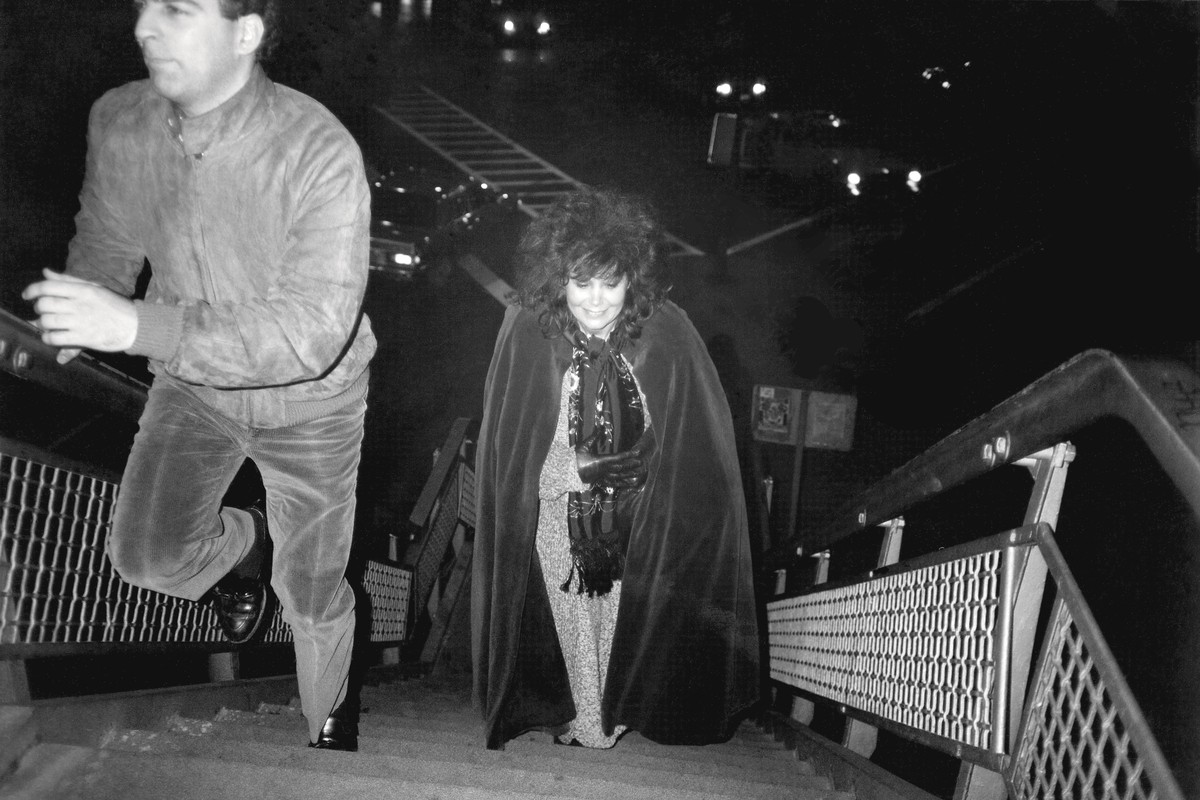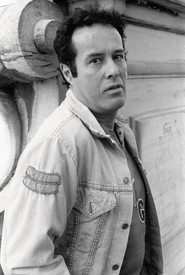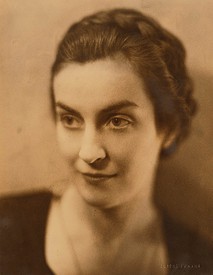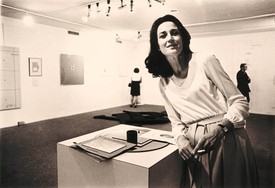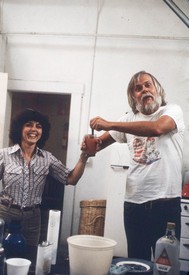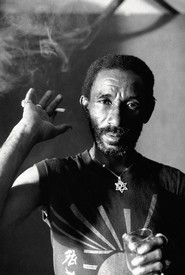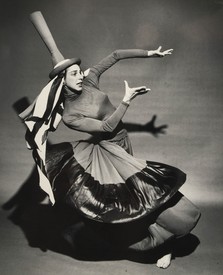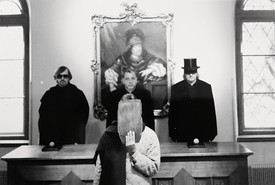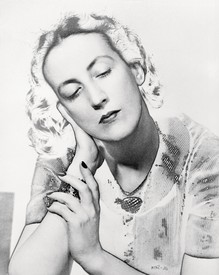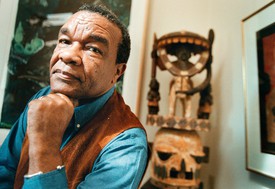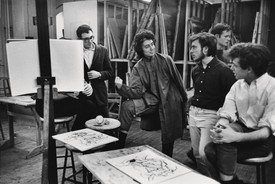
Aria Darcella is a fashion and culture writer based in New York. Photo: Zachary Headapohl
Neighborhood magazines in New York have a way of attracting national readership. Not to bolster any idea that the city is the center of the world or whatever, but there is something about its culture that outsiders want in on. In the 1980s, the culture they wanted in on was the downtown scene, where club kids, designers, and artists were innovating and producing with a fervent energy. And Annie Flanders, who passed away in March, lionized it all in Details.
Details featured a little bit of everything but notably stood out for its fashion and nightlife coverage. The two were inextricably entwined. “Fashion is the most revolutionary thing going on right now,” Flanders told the Washington Post in 1985. “I am open to whatever the kids want to write about. Clothes is it.”1 “The kids,” of course, were her collaborators. Flanders, who launched the magazine in her forties, was decades older than they were. Simon Doonan even referred to her as one of the “grown-ups” in the room.2 The phrase usually implies an air of responsibility: the experienced one, the voice of reason. But Flanders was warmer than that. The talent around her didn’t need to be refined, they just needed a shot, and she was proud to be the first to give it to them.
And American fashion was experiencing a revolution at the time, one that would redefine the city’s importance as a global creative force and launch some of its biggest image producers. Flanders was there to provide attention, encouragement, and business.
Flanders had been involved in fashion since the 1960s, when she was a buyer for the department store Gimbels. She eventually opened her own boutique, Abracadabra, on the Upper East Side, with the aim of promoting young designers being overlooked by larger stores. She supported talents such as Willi Smith, Betsey Johnson, Isabel Toledo, and Anna Sui (who introduced her to the photographer Steven Meisel, then still an illustrator). By the late ’70s her eye for talent had spurred a side gig: reporting on fashion for the SoHo Weekly News. The newspaper folded in 1982, but Flanders wasn’t done with writing.
‘Details’ was the perfect integration of an emerging culture and the writing chronicling it.
She opened Details a few months later with $6,000 of her own savings. It was a scrappy upstart in the best possible way. “Everyone at Details worked for IOUs for the first two years simply because we believed in her vision,” Hal Rubenstein, her restaurant critic, explained in 2015. “She was willing to risk everything for it, so how could we not do the same?”3
Rubenstein began as Flanders’s caterer at the SoHo Weekly News. He was not the only New York cultural figure to get their start at Details. Michael Musto was its movie reviewer; Ronnie Cooke Newhouse, its fashion director. Meisel published his first cover with the magazine and Stephen Gan worked in the fashion department. It was also a place where more established names, such as Bruce Weber and Bill Cunningham, could publish work deemed unfit for the establishment. There was a unique collision of talents, where upstarts were put on the same level as the greats.
What this accomplished, more than anything, was the creation of a tight-knit creative community. Details was the perfect integration of an emerging culture and the writing chronicling it. It didn’t report on the scene from afar, and somehow it did more than just report from within. If nightclubs were the beating heart of downtown culture, Details was the brain: projecting, reflecting, discussing.
It wasn’t long before the monthly was distributed across the country. Flanders mused that its popularity outside New York’s downtown could be attributed to voyeurism; perhaps she was being humble, but she was selling both Details and the culture it covered short. “Voyeurism” implies little to no active participation. Readers wanted to be in the know—to keep up with the names, what to wear, how to live. They might not have been able to party with the club kids, but they could be inspired by, take influence from, even look up to them. They yearned to participate, and reading Details was, for those beyond downtown and even some within it, the closest they could get.
If nightclubs were the beating heart of downtown culture, ‘Details’ was the brain: projecting, reflecting, discussing.
It should come as no surprise that when Flanders’s community needed her, she gave back without hesitation. As the aids epidemic decimated New York, while politicians were turning a blind eye to the tragedy, Flanders was one of the first to join Design Industries Foundation Fighting aids (diffa), to help raise awareness and funds. And when Susanne Bartsch was putting together the Love Ball to raise money for the same cause, Flanders was the first person she called, using her connections to secure advertising for the event. Naturally, it was also covered in Details.
Although Details was ragtag in production, its circulation rose at a rapid clip in its first few years. Other magazines jumped to compete in covering the downtown scene, and in 1985 Flanders was recognized with a Council of Fashion Designers of America award for how gloriously she had changed the game and put American talent in the spotlight. By 1988, Details had attracted the attention of Si Newhouse of Condé Nast, who bought the publication for $2 million. It was the beginning of the end. While Newhouse promised that he had “no interest in encouraging Annie to convert to a broader focus,”4 it seemed what he really wanted was a younger counterpart to GQ.5 In 1990, he shut the title down, later reviving it as a men’s lifestyle and fashion publication.
Though Details was effectively gone, its impact was immeasurable. Several contributors—Musto, Meisel, Gan, and Cooke Newhouse among them—went on to become legends in their own right. Subcultural fashion ascended to the forefront of a conversation it continues to lead to this day. The streets have been inspiring couture for decades, not the other way around.
If there is a throughline in Flanders’s career, it is that she illuminated what was underground, be it a singular design talent or a horrific disease. There was no strategy to it, either, just her passion, her heart. It feels strange to wax poetic about this, because Flanders herself would be the last person to overthink the scene or her magazine. She rejected stuffy intellectualism in favor of fun. After all, a party is never supposed to change the world, it’s just supposed to be a good time. “I founded Details to fill a void,” she said. “It’s the first magazine that didn’t take fashion seriously. Sometimes fashion is funny, you know?”6
1Annie Flanders, quoted in Jeffrey Hogrefe, “Clothes Make the Revolution,” The Washington Post, March 12, 1985. Available online at https://www.washingtonpost.com/archive/lifestyle/1985/03/12/clothes-make-the-revolution (accessed March 29, 2022).
2Simon Doonan, quoted in Penelope Green, “Annie Flanders, Founder of Details Magazine, Dies at 82,” New York Times, March 16, 2022. Available online at www.nytimes.com/2022/03/16/business/media/annie-flanders-dead.html (accessed March 29, 2022).
3Hal Rubenstein, quoted in Eddie Roche, “Daily Flashback: Meet Details Creator Annie Flanders,” The Daily Front Row, November 18, 2015. Available online at https://fashionweekdaily.com/details-annie-flanders/ (accessed March 20, 2022)
4Si Newhouse, quoted in Michael Gross, “In Flanders’s Field,” New York Magazine, March 21, 1988, p. 22.
5See Carol Felsenthal, Citizen Newhouse: Portrait of a Media Merchant (New York: Seven Stories Press, 2011). Available online at https://www.google.com/books/edition/Citizen_Newhouse/3fasCAAAQBAJ?hl=en&gbpv=1&dq=annie+flanders&pg=PT241&printsec=frontcover (accessed March 29, 2022).
6Flanders, quoted in Gross, “New Fashion Magazines: A Daring Focus,” New York Times, August 15, 1986.
